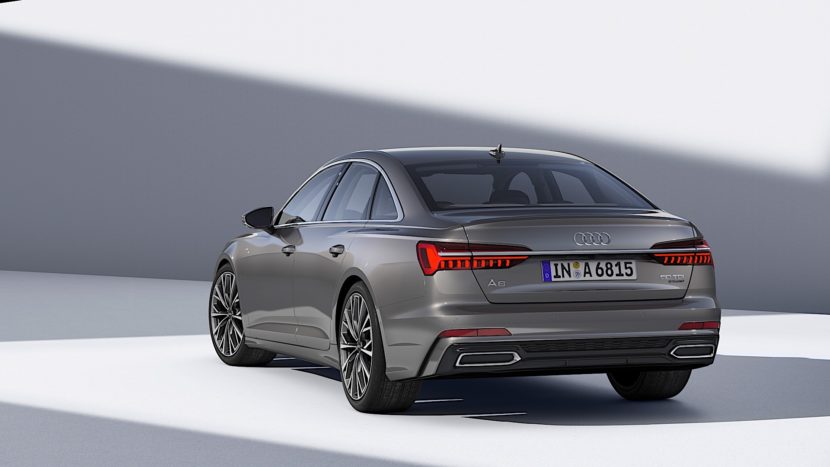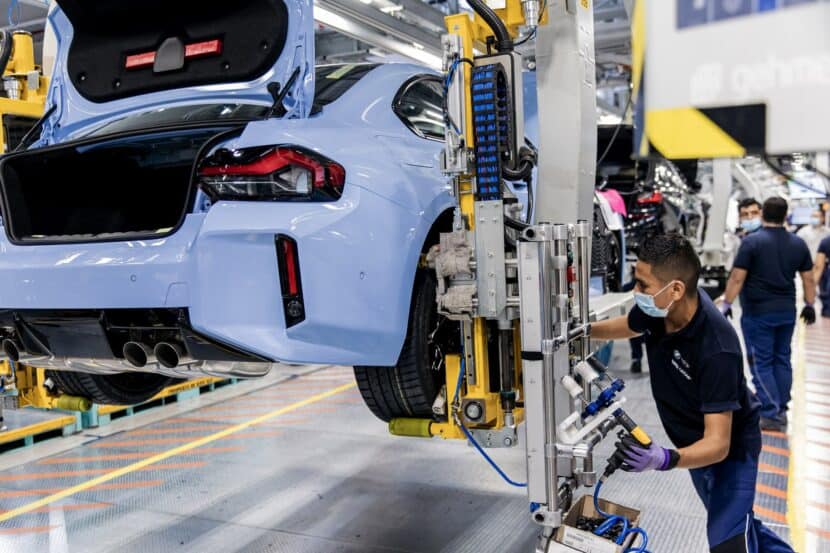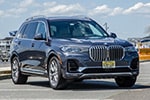The competition in the premium sedan segment is about to get even fiercer as the new 2018 Audi A6 made its debut last night. The new proposition from the four-ringed brand is bringing out a few new tech tidbits and a new design that seems more of an evolution at first rather than a full-on revolution. Following in the footsteps of the newly released A8 and A7 models, the new A6 comes with an impressive technology package to tackle the 5 Series and E-Class.
Built on the same MLB platform like its brothers, the exterior design of the A6 doesn’t break away from what we’ve been getting used to. Sharper edges show up on the front fascia alongside a reinterpretation of the DRL while round the back a straight piece of chrome was added to the boot, to infuse that ‘premium’ feeling all manufacturers seem to associate with it. In terms of sheer size, the A6 grew by a minuscule amount, now being 0.3 inch longer, 0.5 inch wider, and 0.1 inch taller.
The biggest changes hide beneath the sheet metal. The interior is now dominated by glass and steel of sorts and it does look like it belongs in the 21st century. Inside we’re also dealing with an evolutionary approach, one that borrows almost everything from the A7 shown earlier this year. There are 30 different light hues available for ambient lighting and you can get optional ventilated seats in the back as well for the first time in an A6.
Under the hood you’ll find a small selection of engines at launch but it is worth noting that all of them are mild-hybrids. The regenerative brakes fitted as standard on all cars can apparently recuperate up to 12 kWh of energy and store it for later use. In the US customers will initially get a 2-liter 4-cylinder turbo petrol engine as well as a V6. While the former will develop around 250 HP the latter is slated to have 340 HP and 500 Nm (369 lb-ft) of torque available.
On the performance front, the two seem strikingly similar to BMW’s offerings. The 5 Series in 530i guise also comes with a 2-liter 4-cylinder turbo engine making around 250 HP while the 540i uses a straight six 3-liter mill with the exact same power figures as the A6. As far as straight up acceleration goes, Audi claims the 340 HP A6 will reach 62 mph from rest in 5.1 seconds which means it will be 0.3 seconds slower than the xDrive alternative from BMW.
In Europe customers will also get a 3-liter V6 TDI engine, the diesel mill claiming 286 HP and 620 Nm (457 lb-ft) of torque. The sprint to 62 happens in exactly the same time according to the Ingolstadt people which gives it the edge over the 265 HP BMW 530d xDrive model by 0.2 seconds. A noteworthy mention goes to the transmission setups which differ from petrol to diesel alternatives.
While the diesel models will be using the same 8-speed ZF gearbox as the 5 Series, the petrol-powered ones will be relying on Audi’s S-tronic 7-speed cog swapper. No matter the fuel choice, all cars come with quattro all-wheel drive as standard but only in name as there are some technical differences between the two. The all-wheel drive system developed to work with the 8-speed gearbox is based on the more familiar self-locking center differential format.
READ ALSO: Photo Comparison BMW 5 Series vs. Audi A6
The S tronic 7-speed transmission is the more efficient choice, being capable of engaging the rear axle whenever needed but decoupling it during cruising to maximize efficiency. Furthermore, for better handling, Audi is now offering customers a choice of four different suspension setups: the conventional steel spring suspension, the sport suspension, the suspension with damper control and the adaptive air suspension, also with controlled damping.
As things are looking right now, the 5 Series and the E-Class have a serious rival in the shape of the new Audi A6. When the new S6 and RS6 models will be launched, we’ll get into some serious showdowns between the eternal German rivals. However, just by the specs alone, the three cars have never been more evenly matched and it will definitely be tricky to choose one, if you don’t already have a personal preference.




















































































